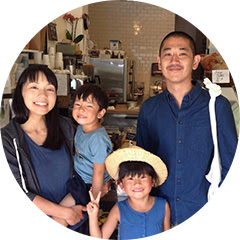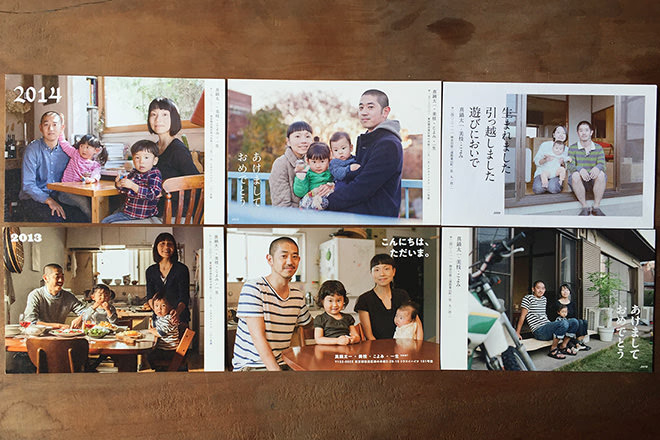The person we interviewed this time was graphic designer Takeshi Ishibashi, who has a deep connection with Monosus.
Ishibashi is a freelance graphic designer who works on a wide range of media, from advertising, promotional tools, and editorial design to art direction and photography direction, and the quality of his work is astounding.
We received a message (a love letter?) from Manabe, the head of the Production Department, about his "connection" with Ishibashi.
I've known Mr. Ishibashi for about 14 years.
Ever since I was just starting out as a rookie, he has been my comrade, so to speak; the two of us have traveled together for weeks at a time to harsh environments like Thailand, Vietnam, India and Russia, where we have worked on heavy local advertising production tasks with multinational teams in each country.
I consider my relationship with him to be more than family, but less than friends.
For the past dozen years, he has been more than just a family member to me, sharing the ups and downs of my life one-sidedly, but our relationship is more professional than that of a friend. (He once told me clearly, "Manabe-san is not a friend."...lol)
From that connection, our relationship as Monosas has now grown, and I am very happy to be able to visit his stylish home and office and even have him appear in articles on the Monosas site. (I have never been invited to his home before...)
Speaking of a relationship that is more than just family, for six years from 2009 until we moved to Kamiyama two years ago, he continued to take photos for our New Year's cards and watched over our family as they grew. (He still designs them now.)
New Year's cards for the Manabe family, photographed and designed by Ishibashi (2009-2014)"Work with people you want to live with."
These are words that we at Monosus cherish.Even if my feelings for him are one-sided, I believe I will continue to live, work, and grow old together with him.
I'm thinking of asking him to take the family photo for this year's New Year's cards again.
Taichi Manabe
Monosus and Ishibashi-san, their wide and deep connection
The relationship between Monosus and Ishibashi-san is deep, dating back to before the company was founded. In fact, Ishibashi-san created the Monosus logo. The logo beautifully expresses the concept of "having your own ruler," which is also the origin of the company name, and has supported Monosus' progress to date (it is currently being renewed).
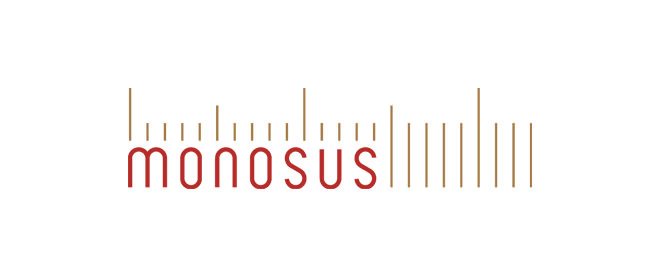
In addition to the logo, we have worked with the Production Department on a number of client projects, including the brochure for the " Google Innovation Tohoku " project, in which the Production Department is involved, and the graphic design for the entire event venue.
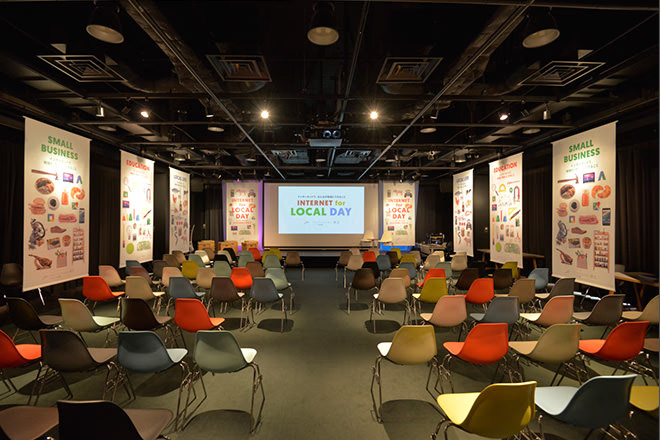
INTERNET FOR LOCAL DAY, sponsored by Innovation Tohoku, was held at Shibuya Hikarie last November. We were in charge of the spatial design, which was the unsung hero that enlivened the event, including the event's title logo and the hanging banners at the venue.
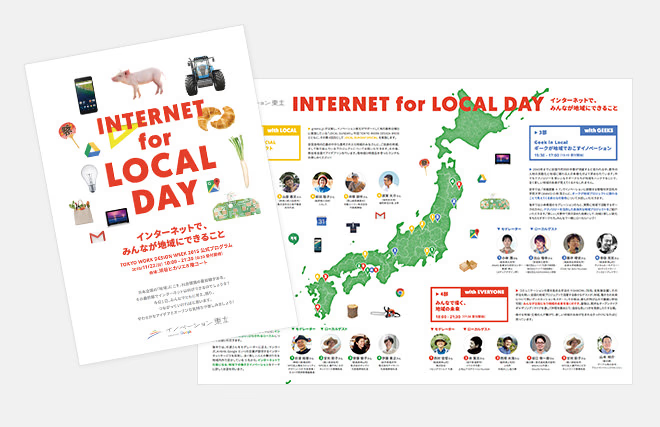
Event pamphlet distributed at the venue on the day. The design makes it easy to understand at a glance the characteristics of this event, which attracts guests from all over the country. It makes you excited.
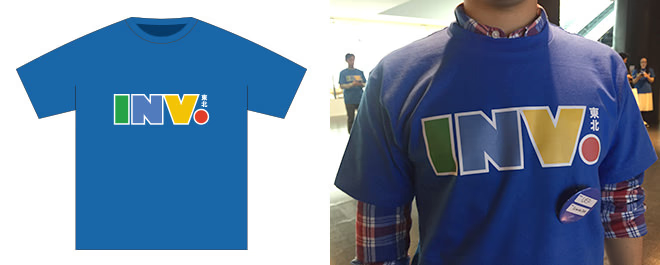
Innovation Tohoku staff T-shirts have been redesigned by Ishibashi. The large, pop INV letters make a strong impression.
What amazes me every time I work with him is his flexibility and his artisanal design skills. I visited Ishibashi's office to find out the secret behind his work.
A good balance between "living" and "working"
Ishibashi's office is located between Harajuku and Sendagaya. It is a room in an apartment building in a quiet residential area with lots of greenery, just off a busy street. This is Ishibashi's office and residence. The layout is spacious, with a living room, dining room, work space, and bedroom. The large windows offer a great view of the open streetscape of Jingu Gaien.
"Having my workplace and home in the same place is the ideal environment for me, and it's the least stressful. I've always dreamed of it, and it finally came true recently. If you think about it, this is how people used to work in Japan in the past."
Although he sometimes has to work through the night, he says he has a good work-life balance and has created the most comfortable working environment for him.
"What got me into design was when my older sister, who is a game designer, said to me, 'You might like design, don't you?' I hadn't really thought about it before, but gradually I started to think, 'Maybe that's it.'"
After entering a technical college, he enrolled in Kuwasawa Design School. After graduating, he joined an advertising production company and began working as an office worker. There, what awaited Ishibashi was long hours with no end in sight.
"Design is a job that you can't reach unless you put in the time. I worked hard at the company and was able to learn the basics of design and client work, but when you're required to work with your hands for 12 to 13 hours every day, it means you end up spending far more time with coworkers than with your family and close friends. I continued to have doubts about this way of working."
Filling the "gaps" as a freelancer
If you acquire skills, you can survive without being affiliated with a company. After a few years, I quit my job and started working as a freelance designer.
"My main work at the time was sales promotion-oriented. I designed everything from car owner's magazines to survey postcards. At that time, I had suddenly become a freelancer, so I didn't have much experience. For example, in a project for a global company, you have to design content unique to each country while matching the overall tone. So how do you listen to the client's requests and output them? Naturally, no one teaches you, so you figure it out by trial and error as you go along with the work, like on-the-job training. That may have been one of the reasons why I started to get the hang of working with clients."
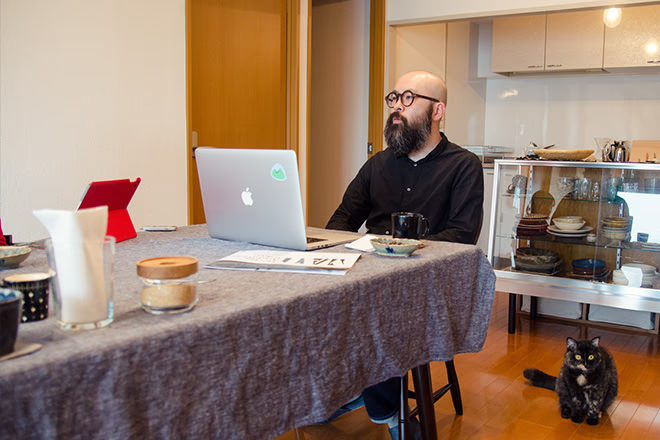
The interview was held in Ishibashi's living room/meeting space. Listening intently to the story with his beloved cat, Thunder, on his right.
It was around that time that he met the company's president, Hayashi, and their relationship began. Regarding his diverse work as a freelancer, Ishibashi describes his role as a "niche industry."
"To survive as a freelancer among so many designers, you need to have something unique that only you can offer. That's why I chose the 'niche industry.'
For example, a famous art director may decide on the initial graphics and direction, but may not have time to handle the detailed production of a project that continues to move forward. In that case, a design that understands the existing concept, tone, and manner, and ensures that the project proceeds smoothly without any discrepancies, is required, but there are actually not many people who are willing to do that. So I decided to do it myself.
The value of "someone who does the tedious work"
In order to understand the client's intentions and create creative content that is free of any conflicts, you need advanced communication skills and graphic techniques.
"I think it's a win if people think of me as someone who does the tedious work. I think there's value in doing things that no one else does."
For Monosus, Ishibashi is an indispensable person who can be asked to do those "troublesome things." So, why hasn't he been involved in digital matters such as the web until now, despite his connection with Monosus?
"I thought I should also work on the web. But in the end I decided not to because even if I acquired the skills, they would quickly become outdated, and directing isn't really my style. So I decided to pursue one thing as a 'craftsman'. Specializing in something allows me to pursue it deeply and continue for a long time. I want to narrow down and deepen my knowledge so that I can continue designing for the rest of my life."
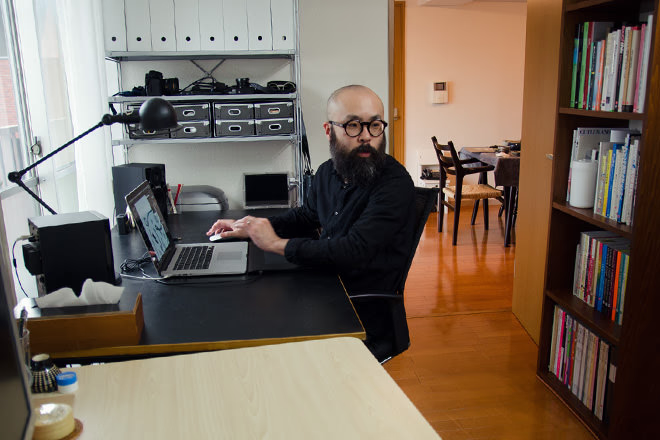
Ishibashi's workspace. The area around his desk is very simple. Design books and paper samples are lined up on the bookshelf, and Ishibashi's camera, whose hobby is photography, can be seen on the shelf. There is also a Shiba Inu named Hajime in one corner of the room.
Yes, Ishibashi's production style is "artisanal."
That's why you can trust us with your work.
"When you join an organization as a salaryman, even technical workers can be promoted to management positions. I don't really understand that. It's more natural for people to have a career path that allows them to advance to higher levels in their respective specialist positions, and the specialist skills that individuals have built up are not lost to society. I think that society will become easier to live and work in if more people single-mindedly pursue project management or live that way."
Another thing that is amazing about Ishibashi is his research ability to get the right information. Yamauchi, a member of the production department who has worked with Ishibashi for a long time, said, "Even when he finds rules that the client doesn't know about, or when no one can find an image photo, Ishibashi finds the perfect image for the theme." So how did he acquire such research skills?
"The reason I do research is simply because I don't want to do anything useless. When I first became a designer, there was no internet, so when starting a project, I had to go through the process of 'searching for materials.' I would look through all the photo books in the bookshelves in the office or in bookstores as a source of inspiration, gradually clarifying the image I wanted to create in my mind and creating something that I could say was 'this is the best.' I think I may have acquired this skill through going through such processes."
Apparently, even after Google search began to take hold, he still checked almost all of the search result pages. Of course, it's not possible to do the same thing now because the search results are so huge, but this is a typical story of Ishibashi, who "does bothersome things" to "make sure he gets results."
Cherish the connections,
And mastering the craftsmanship
Ishibashi approaches design as a "craftsman" with his skilled and knowledgeable approach.
When I asked him what he enjoys the most right now, he answered that it was events.
"When I usually do graphic design, I don't get to see the faces of the people who receive my gifts, but at an event I get to meet them in person, which was a new experience for me. For the ' Nomadic Kitchen ' event in particular, I made tables in the fields while thinking about when the photos would be taken, and asked a local chef to write a welcome sign that was urgently needed on-site. I directed the event while juggling what was available at the time. It had a live feel to it, which was fun."

This is a scene from "DANRAN" by Nomadic Kitchen | Pleasure of Gathering - Connections through food, the joy of togetherness, held in Obuse, Nagano Prefecture in 2014. The setup had a live feel, using what was available at the time.
"Nomadic Kitchen" is a project that explores rich local food, started by Manabe of the production department as his life's work. Ishibashi is in charge of everything from the art direction of the entire project to the design of the original salt "Nomadic Salt," and he is leading the image of "Nomadic Kitchen," which has a philosophy and style.

nomadic kitchen salt
Additionally, at the request of a farmer who grows pesticide-free lemons in Setoda, Hiroshima Prefecture, whom he met at an event for the same project, he also designed a logo and flyer for "Citrus Farms Tatemichiya."
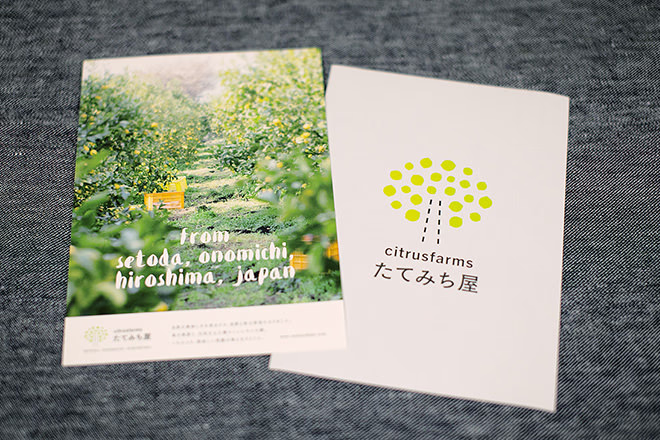
Logo and flyer of "Tatemichiya," a pesticide-free lemon farm in Setoda, Hiroshima Prefecture
In addition, he has worked on many other projects through connections with Monosus members who also work in other fields, such as designing the packaging for original items for the restaurant " cignale enoteca ."
Despite not having the same budget as regular client work, Ishibashi was happy to take on the project because he is "someone who values connections."
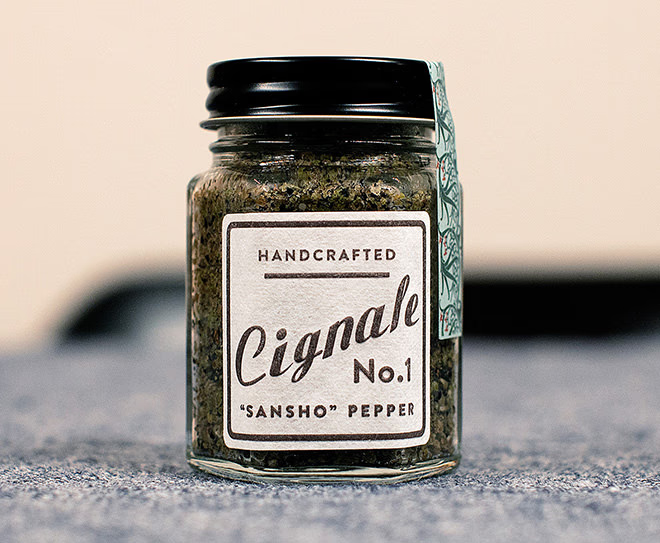
cignale enoteca Sansho pepper packaging
Other projects he has undertaken include providing design support for the cafe Bear Pond 's original goods such as mugs and bandanas, and art direction and brand direction for NO-MORE NO-LESS , a Shizuoka apparel brand run by Ishibashi's cousin. All of the designs are refined and streamlined, and the end product shows Ishibashi's commitment to artisanal design and careful consideration of the recipient.
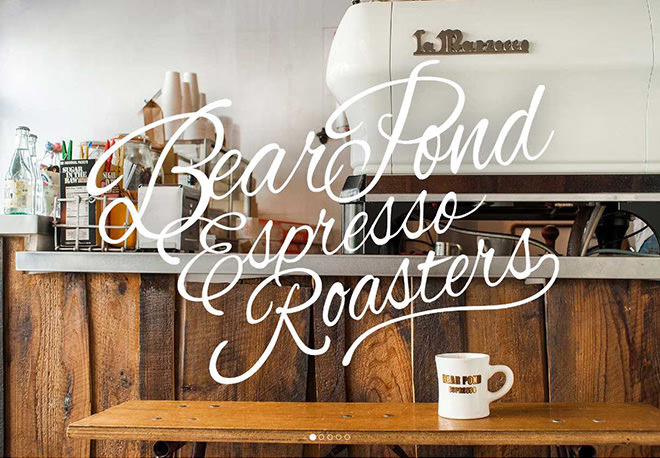
Bear Pond website designed by Ishibashi ( http://www.bear-pond.com/ )
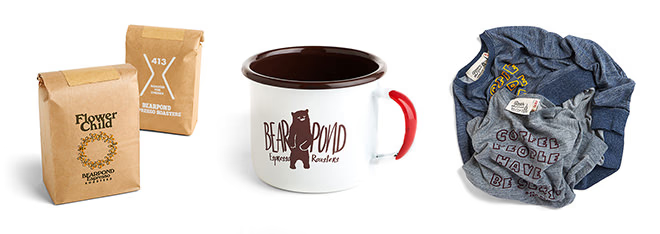
He also designed coffee bean packaging, mugs and T-shirts.
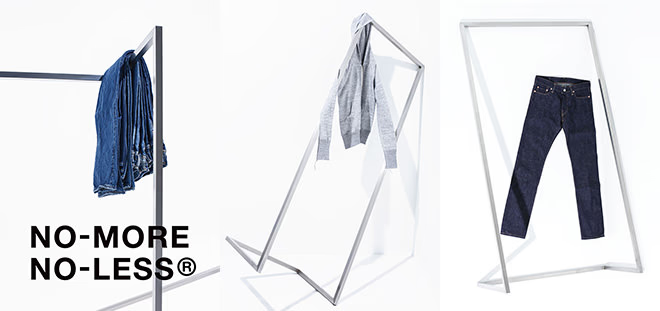
Excerpt from the NO-MORE NO-LESS catalogue
Finally, we asked Ishibashi what he thinks are the good points of Monosus.
"New things are being born as a result of various people working independently and doing different things at the same time. That's what's interesting."
As for the relationship between Ishibashi and Monosus, as Manabe said in the message at the beginning,
This is probably symbolized by the phrase "more than family, less than friends."
We trust each other as professionals.
Monosas has been attracted to Ishibashi's work style, and has spent a lot of time with him. We hope that we can continue to live and work together in the future.
(Partially updated on April 21, 2023)
Profile of Takeshi Ishibashi
Designer. Born in Shizuoka Prefecture in 1978. Graduated from Kuwasawa Design School. After working at an advertising production company, he has been freelance since 2005. Based on graphic design, he produces promotional tools such as advertisements and newsletters, and develops CI/VI. In addition to providing design support to general companies, he also provides design support to independent projects such as the food and fashion collaboration project " PIONEER SQUARE PANTRY ", the food project " Nomadic Kitchen ", and the Shimokitazawa coffee shop " BEARPOND ESPRESSO ".

